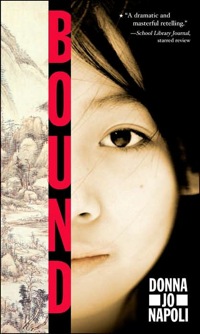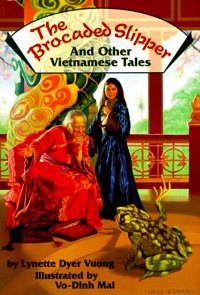By Marilyn Carpenter, Eastern Washington University, Cheney, WA
 Last week I wrote about the challenge of evaluating fairy tales for cultural authenticity and the tools that help meet that challenge. In this post I explore the question: should there be zero tolerance for cultural inaccuracies in fairy tales? I’ll by describing the process of evaluating a novel-length version of Cinderella set in China.
Last week I wrote about the challenge of evaluating fairy tales for cultural authenticity and the tools that help meet that challenge. In this post I explore the question: should there be zero tolerance for cultural inaccuracies in fairy tales? I’ll by describing the process of evaluating a novel-length version of Cinderella set in China.
When the book Bound, by Donna Jo Napoli, arrived in my office I grabbed it to read immediately. I had previously read all Napoli’s novel-length versions of the fairy tales like Zel and Beast. These tales were favorites of mine. My students also had enjoyed them. I was eager to have a new book to booktalk for my teen literature class. I was especially interested in Bound since it was a Cinderella story set in China, so I started reading it with a positive view based on my previous experiences with the author and her books.
Continue reading


 Evaluating fairy tales can be a challenge especially if the setting is another culture or country. Serving on the Children’s Literature Assembly for the National Council of Teachers of English
Evaluating fairy tales can be a challenge especially if the setting is another culture or country. Serving on the Children’s Literature Assembly for the National Council of Teachers of English  Fairy tales fueled my imaginary life as a child. In my play I became Snow White, Cinderella, and sometimes even the Prince when my friends insisted they must have a turn at the “main parts.” The romance of the tales captured my interest. Waiting for sleep at night, I would create new versions of the stories, always starring myself as the heroine.
Fairy tales fueled my imaginary life as a child. In my play I became Snow White, Cinderella, and sometimes even the Prince when my friends insisted they must have a turn at the “main parts.” The romance of the tales captured my interest. Waiting for sleep at night, I would create new versions of the stories, always starring myself as the heroine.